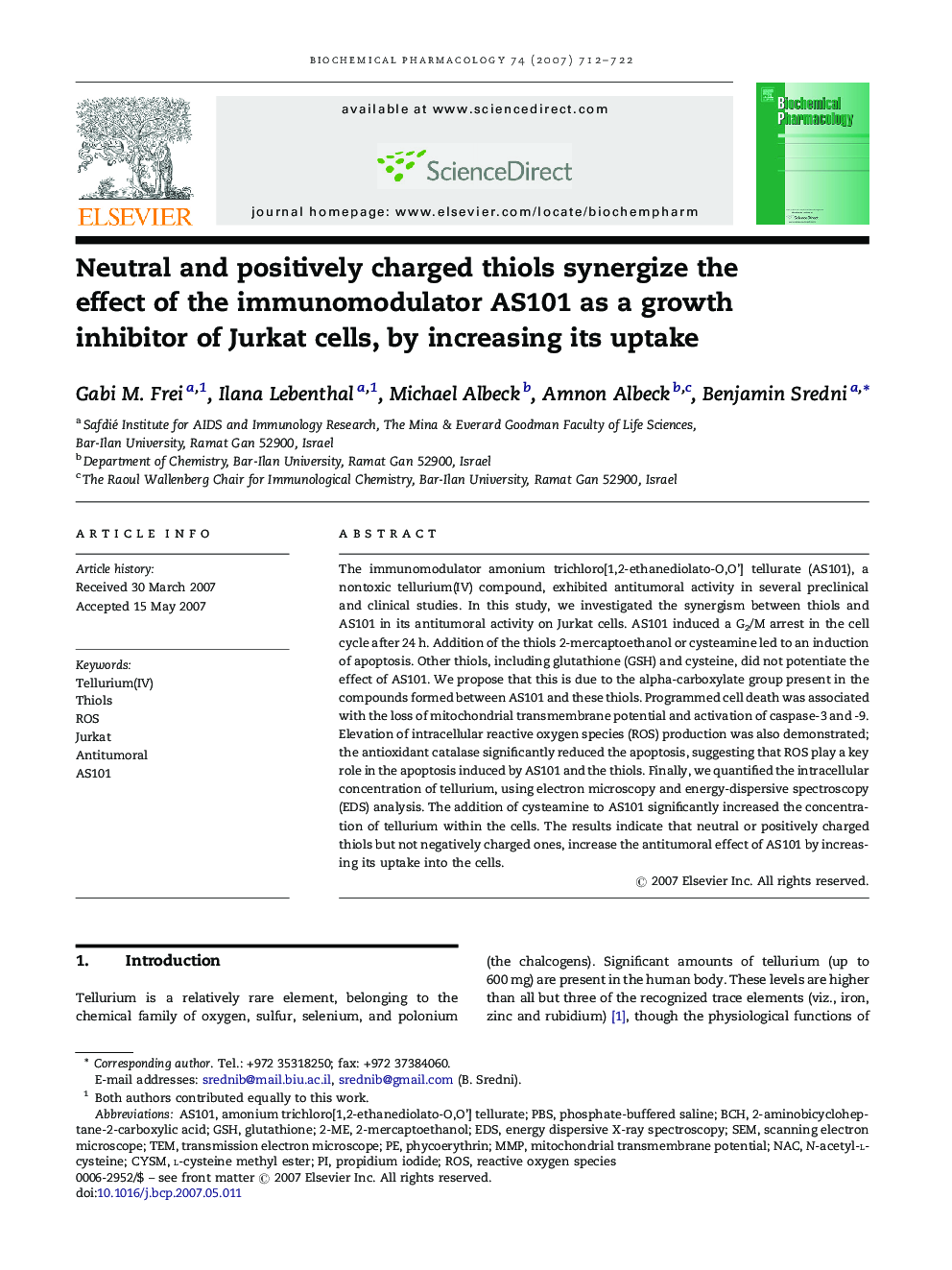| Article ID | Journal | Published Year | Pages | File Type |
|---|---|---|---|---|
| 2515137 | Biochemical Pharmacology | 2007 | 11 Pages |
The immunomodulator amonium trichloro[1,2-ethanediolato-O,O’] tellurate (AS101), a nontoxic tellurium(IV) compound, exhibited antitumoral activity in several preclinical and clinical studies. In this study, we investigated the synergism between thiols and AS101 in its antitumoral activity on Jurkat cells. AS101 induced a G2/M arrest in the cell cycle after 24 h. Addition of the thiols 2-mercaptoethanol or cysteamine led to an induction of apoptosis. Other thiols, including glutathione (GSH) and cysteine, did not potentiate the effect of AS101. We propose that this is due to the alpha-carboxylate group present in the compounds formed between AS101 and these thiols. Programmed cell death was associated with the loss of mitochondrial transmembrane potential and activation of caspase-3 and -9. Elevation of intracellular reactive oxygen species (ROS) production was also demonstrated; the antioxidant catalase significantly reduced the apoptosis, suggesting that ROS play a key role in the apoptosis induced by AS101 and the thiols. Finally, we quantified the intracellular concentration of tellurium, using electron microscopy and energy-dispersive spectroscopy (EDS) analysis. The addition of cysteamine to AS101 significantly increased the concentration of tellurium within the cells. The results indicate that neutral or positively charged thiols but not negatively charged ones, increase the antitumoral effect of AS101 by increasing its uptake into the cells.
